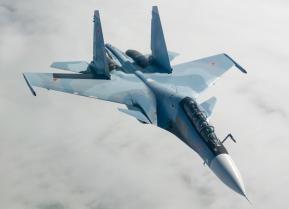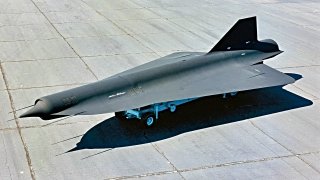D-21: The Nearly Forgotten Mach 3.2 Drone Built to Spy on China
According to declassified documents, the D-21 was developed to be fitted to a specially modified variant of the SR-71 Blackbird — the M21.
Meet the D-21: While drone use may be considered a recent wartime innovation, the U.S. military has been developing unmanned aerial vehicles as a tool for reconnaissance for decades. Lockheed Martin’s Skunk Works developed the D-21 spy drone in the late 1960s in collaboration with the CIA and U.S. Air Force.
At that time, the U.S. wanted an unmanned airframe that could conduct spy missions over the Soviet Union.
Sending piloted airframes over USSR territory was risky, as proven by the downing of a U-2 in 1960. The spy drone developed to address that danger would remain a secret until it was abandoned.
What We Know About the D-21
According to declassified documents, the D-21 was developed to be fitted to a specially modified variant of the SR-71 Blackbird — the M21. Recognized as the fastest airframe on Earth, the Blackbird incorporated some of the earliest stealth technology.
The SR-71 could reach Mach-3.2 at 85,000 feet. The D-21 spy plane’s launch weight was 11,000 pounds, with a service ceiling of 95,000 feet. Able to evade detection better than its predecessors, the Blackbird was developed to play a leading role in the escalating Cold War. Powered by a Marquardt ramjet engine, the D-21 could reach speeds of more than 2,000 miles per hour. Once the drone captured imagery, it would eject its film canister for a C-130 transport to receive mid-air. Due to a couple of mishaps, however, the Air Force considered alternative launch vehicles.
How Did the D-21 Operate?
In 1968, the first D-21 launched successfully from a B-52 bomber. As detailed by The Aviation Geek Club, “The drone flew 3,000 miles at 90,000 feet. After a few more flight tests, the CIA and the Air Force decided to conduct four operational launches that all ended in failure in some way. Two flights were successful, however the imagery could not be recovered from the D-21’s hatch. The other two operational flights ended with one being lost in a heavily defended area and the other D-21 simply disappeared after launch.”
Was It a Success?
After the D-21 successfully launched from a B-52, the program transitioned into operational reconnaissance flights over China.
Overall, four drones were sent into China’s airspace. The whereabouts of two of these drones remain a mystery, while the other two failed to eject film.
The D-21 spy plane program was canceled in 1971. Eleven of the surviving spy planes are now on display at military and aviation museums across the country, including the Evergreen Aviation & Space Museum in Oregon and the Robins Air Force Base in Georgia.
While the remaining D-21s have been relegated to museum duty, the spy plane’s impressive Mach-3.0 capability with an operation ceiling of 90,000 feet was truly unmatched during its service years.
About the Author
Maya Carlin is an analyst with the Center for Security Policy and a former Anna Sobol Levy Fellow at IDC Herzliya in Israel. She has by-lines in many publications, including The National Interest, Jerusalem Post, and Times of Israel. You can follow her on Twitter: @MayaCarlin.
Image Credit: Creative Commons.


